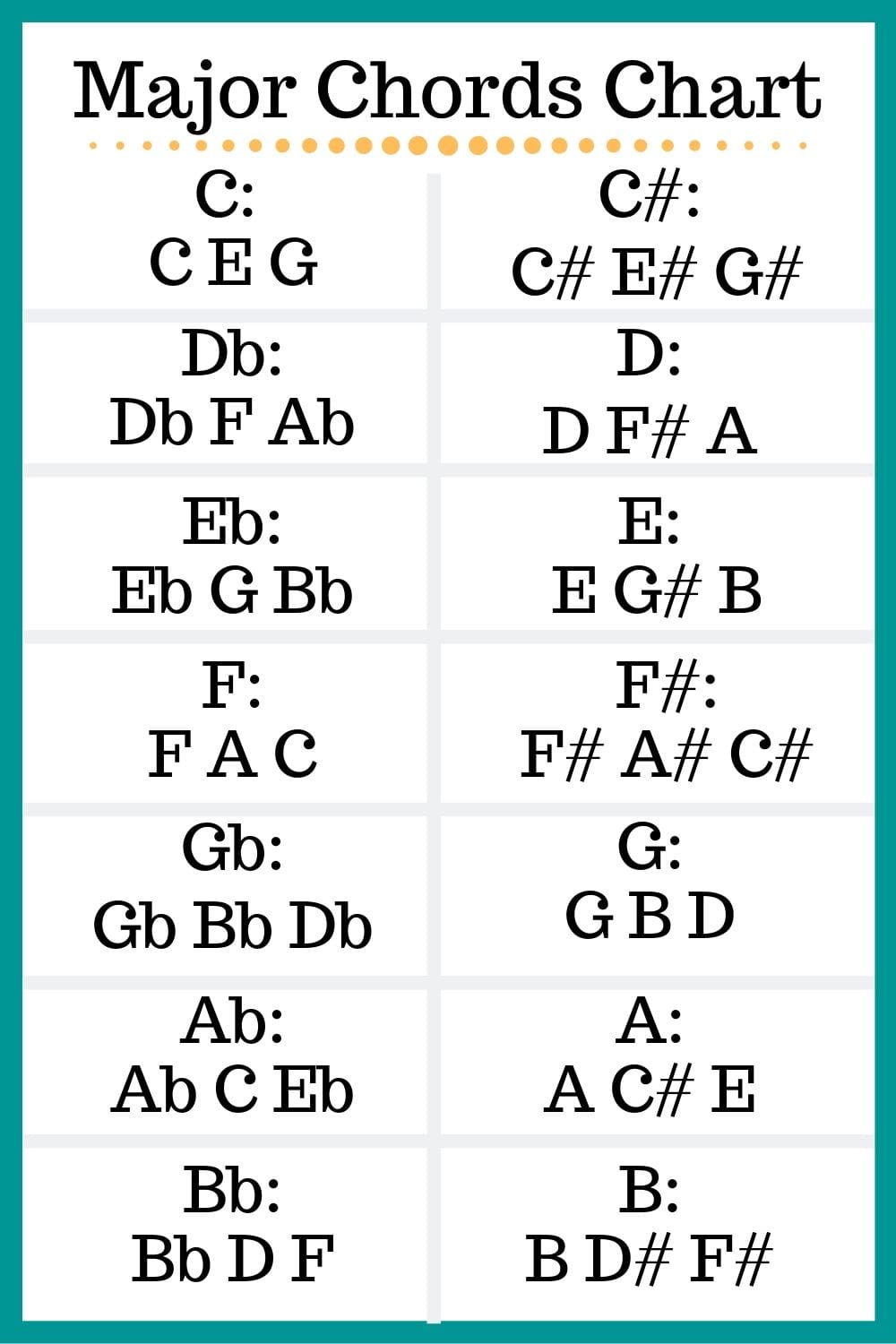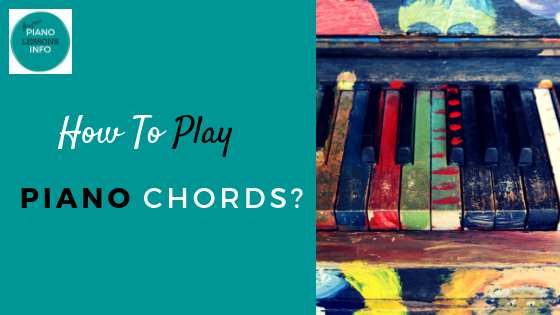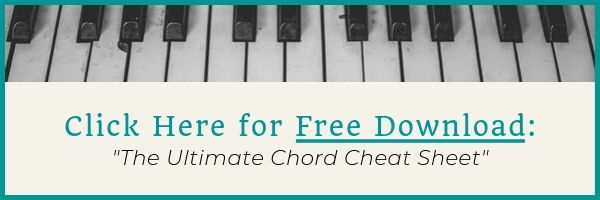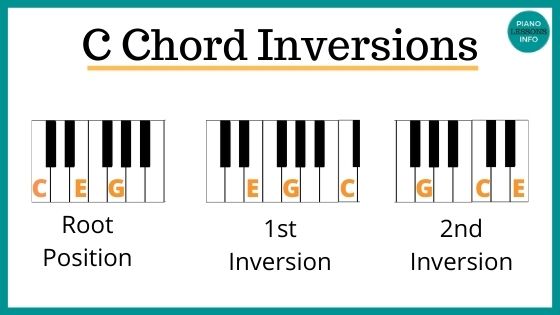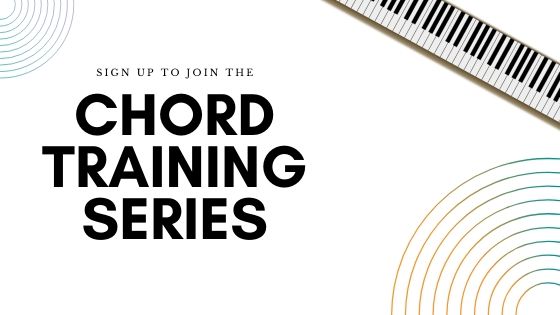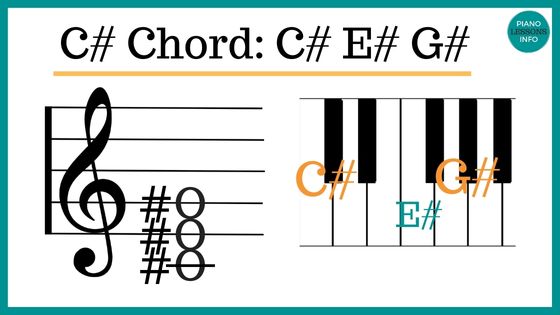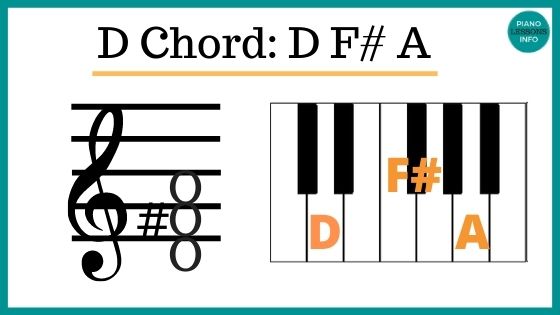E Chord on Piano: Notes, Finger Positions & How To Play E Major Chord
An E chord on piano is a major chord (built on the 1st, 3rd and 5th notes of the major scale) and is made up of the notes E G# and B.
The E major piano chord is a really common chord to come across and one that is essential to have down - especially if playing with guitar players.
On this page, you'll find:
- the E chord notes
- finger position for E major chord
- a video of how to play E
- E chord inversions
- E/G#
- E/B
- some chord theory
- and how to play in the key of E major
E Chord Piano Notes
The notes that make up an E chord are E G# and B.
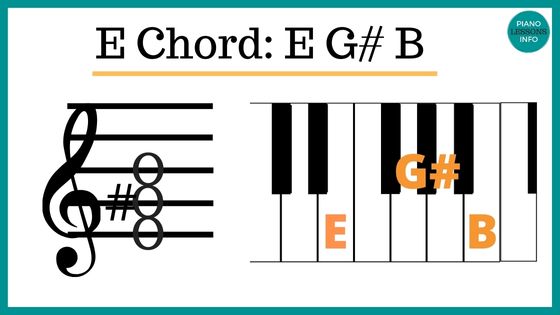
These notes don't always need to be in this order but in general, try to play all of them somewhere on the piano.
I'd recommend using E as the very lowest note in the left hand. I usually play the chord in my right hand and the E as a bass note in the left hand.
It's always a good idea to start playing a new chord, like the E chord on piano in root position.
How To Play E Piano Chord & It's Sound
Here's a quick video tutorial on how to play E major chord and what it should sound like.
E Chord Piano Finger Position
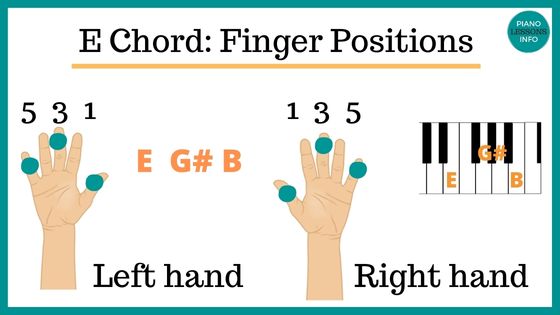
Play the E chord in root position (E G# B) with your thumb (finger 1), middle finger (finger 3) and pinkie (finger 5).
This is a standard fingering for chords in root position and a great position to get into your muscle memory.
E/G# Chord
There are a few variations on the E chord like E/G#.
When you see the E/G# chord, it means to play the G# as the lowest note in your left hand, or in the bass.
This gives the chord a slightly different sound and emphasis and so I'd recommend using this variation when you see it.
E/B Chord
When you see E/B, it means to play B as the lowest note in your left hand. B is your bass note and you play the rest of the E chord notes (E and G#) above that. That can be done in any order.
Whenever you see a slash, always play the note after the slash as the lowest note or your bass note.
Inversions
When you play the E chord on piano, you can play it in any variation but there are some standard inversions - basically positions to play the chord in - that are useful to learn and feel comfortable with.
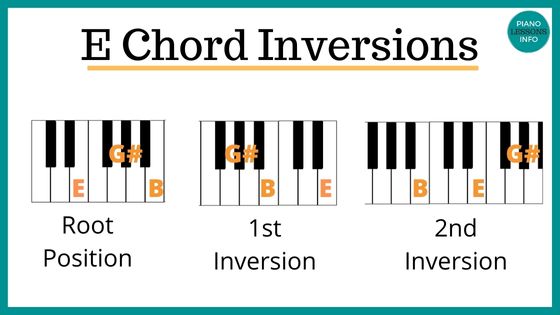
The root position (basically home position) of E is: E G# B
First inversion is: G# B E
Second inversion is: B E G#
Chord Theory for E Major Chord
Major chords are built on the 1st, 3rd, and 5th notes of a major scale.
So, in the case of the E chord, it's built of those degrees of the E major scale.
The E major scale (see below also) has the notes E F# G# A B C# D# E.
So you see, E, G# and B are notes 1,3 and 5.
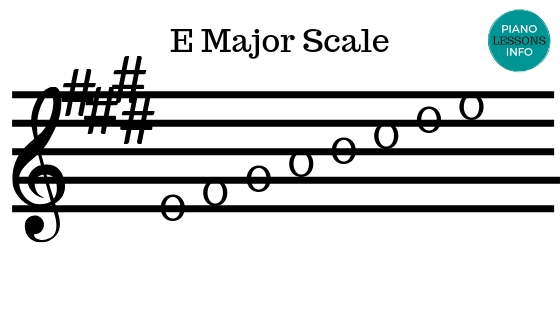
How Do You Play in Key E
If you are playing the E chord in the key of E, (and the E chord does show up in other keys as well like A and B), you need to play within the key signature of E.
The key of E has 4 sharps, so you need to remember what those are when you're playing. These notes are F#, C#, G#, D#.
If you need more help understanding key signatures, visit the key signatures page.
If you need to look up more chords, visit the Piano Chord Charts page or download your own copy below.
Free Download:
Ultimate Chord Cheat Sheet

Subscribe below and get free access to the (printable) Ultimate Chord Cheat Sheet.
Recent Articles
-
Piano Notes Chart
Nov 20, 23 10:21 PM
Find a piano notes chart for treble clef and bass clef notes as well as the different types of notes. -
D Chord on Piano + Diagram, How To & Theory
Oct 24, 23 12:20 AM
Learn how to play the D chord on piano with diagram, fingering, D/A, D/F# and a theory explainer. -
Diminished Piano Chords: Chart & How to Make Them
Oct 09, 23 09:23 PM
Learn the different diminished piano chords and how to make them. Here you'll find both a diminished chord chart and an explanation.
- Home
- 14 Day Chord Challenge
- E Chord Piano
Free Download:
Ultimate Chord Cheat Sheet

Subscribe below and get free access to the (printable) Ultimate Chord Cheat Sheet.

